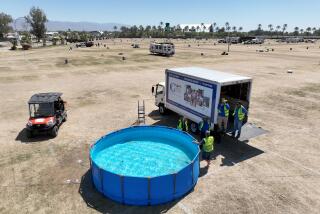Consider the Klamath
The agreement reached Tuesday to remove four dams on the Klamath River in northwestern California and southern Oregon is welcome news, and not just for the salmon that spawn upstream or the people who depend on a sustainable fishery for their livelihood. The battle for the Klamath isn’t over, and it will continue to be the focus of competing interests. But if the deal is seen through and the dams are removed, it will represent a successful effort by those interests to work together for their mutual benefit. And if they can do it on the Klamath, it’s not too far-fetched to believe that farmers, fishermen, environmentalists and thirsty cities can find a way forward in the vastly more populous and arguably more complicated Sacramento-San Joaquin River Delta system that serves the needs of people across a majority of the state.
Yes, the Klamath is geographically separate, sending lake water and Cascades snowmelt to California’s far northern coast. It is only marginally related to the rivers that flow from the Sierra to the San Francisco Bay -- or to pumps that divert it south. And yes, the dams to be removed were never intended to store water for agricultural or urban use. They were constructed to generate electricity and are, in that sense, distinct from the dams that are harming Central Valley and Sierra fish populations, and distinct as well from the new dams that agricultural interests are demanding as a price for their agreement to a comprehensive delta solution.
It’s too easy, therefore, to conclude that removal of dams on one river is inconsistent with continued efforts to add new dams to the Sacramento and San Joaquin rivers. But it does raise the question: Why, exactly, should we build new dams that will further degrade the environment and cause further costly problems that will have to be solved in the future? That question became even more pressing this week as water flow was restored for the first time in more than half a century to a portion of the San Joaquin River that was dried up by a massive dam. There are now plans to reintroduce salmon.
So the Klamath deal also serves as a reminder that California’s multimillion-dollar fishing industry has a stake in the health of our rivers. Water policy here does not boil down to “fish versus jobs,” and it’s not a simple fight between farmers drained of their livelihoods and environmentalists. It’s a complex problem with much at stake on many fronts. In the Klamath deal, multiple interests agreed, in a collective leap of faith, to back away from a winner-take-all stance. It’s not good simply for the fish or for the environment; it’s good for the economy. Competing interests should keep that in mind as they work toward a comprehensive legislative solution for the delta.
More to Read
Start your day right
Sign up for Essential California for news, features and recommendations from the L.A. Times and beyond in your inbox six days a week.
You may occasionally receive promotional content from the Los Angeles Times.






